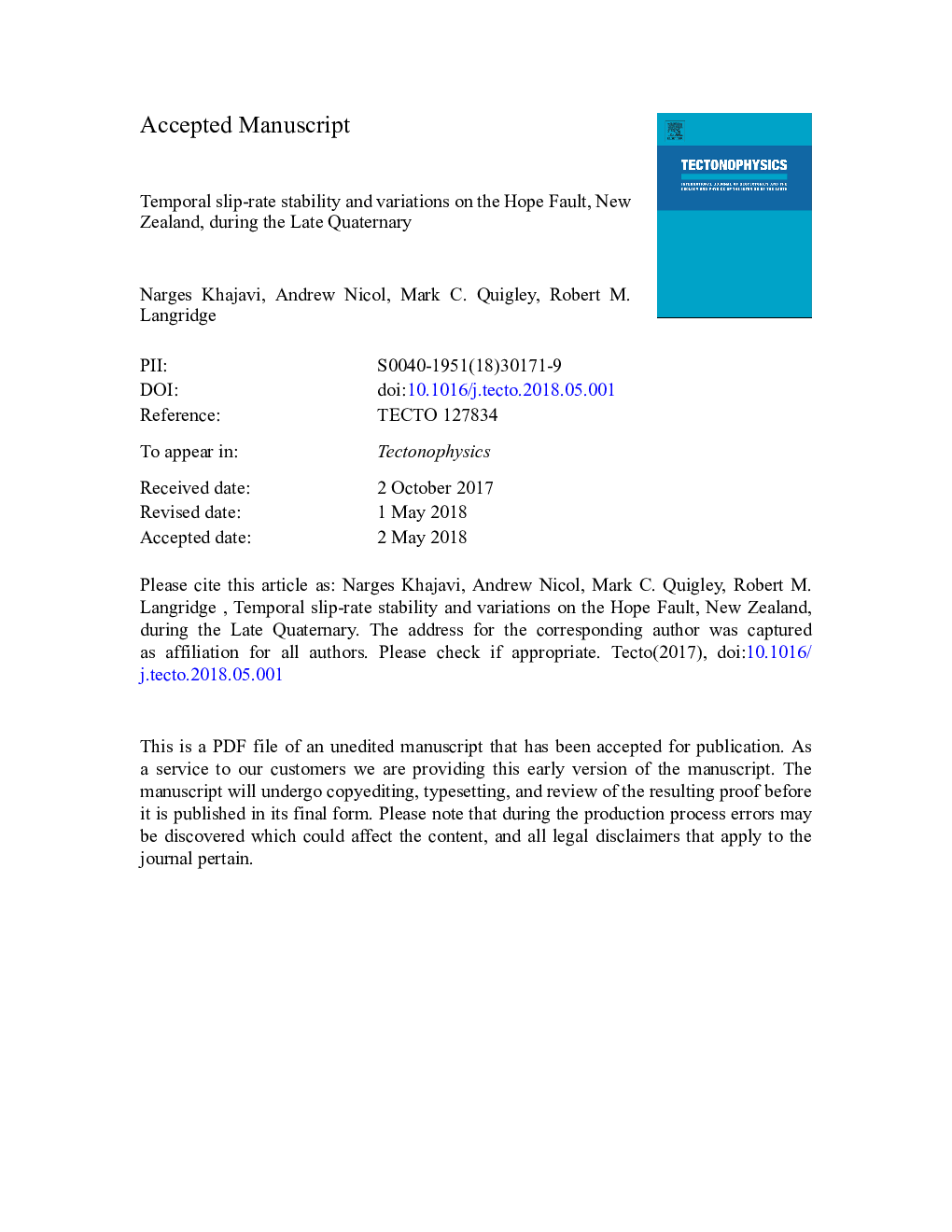| Article ID | Journal | Published Year | Pages | File Type |
|---|---|---|---|---|
| 8908657 | Tectonophysics | 2018 | 43 Pages |
Abstract
The Hope Fault transfers slip from Hikurangi subduction to the Alpine Fault in the northern South Island of New Zealand. It accommodates mainly dextral strike slip and currently carries the highest slip rate in the Marlborough Fault System. Displacements, displacement rates and earthquake recurrence intervals have been determined using a combination of high resolution LiDAR for 59 dextral displacements (~2.5-200â¯m) together with calibrated radiocarbon ages (~130â¯yr to 13,000â¯yr) for abandoned stream channels, terrace risers and alluvial fans. Mean single-event displacement (SED) of 3â¯Â±â¯0.6â¯m (2.2 to 4.6â¯m for 21 measurements) and mean recurrence interval of ~266â¯Â±â¯100â¯yr (range 128 to 560â¯yr) have been determined for the five most recent surface-rupturing earthquakes. On time scales â¥2300â¯yr the dextral slip rate is uniform at 12.2â¯Â±â¯2.4â¯mm/yr, however, when averaged over time intervals of ~230 to 1700â¯yr slip rates range from ~4 to 46.4â¯mm/yr. This order-of-magnitude variability in slip rate over shorter timescales cannot be fully attributed to errors in displacement and age data, and is at least partly due to variations in earthquake recurrence interval and inferred SED. Short-term non-characteristic earthquake behaviour may be due to changes in fault loading arising from stress interactions between different segments of the Hope Fault and nearby faults.
Related Topics
Physical Sciences and Engineering
Earth and Planetary Sciences
Earth-Surface Processes
Authors
Narges Khajavi, Andrew Nicol, Mark C. Quigley, Robert M. Langridge,
